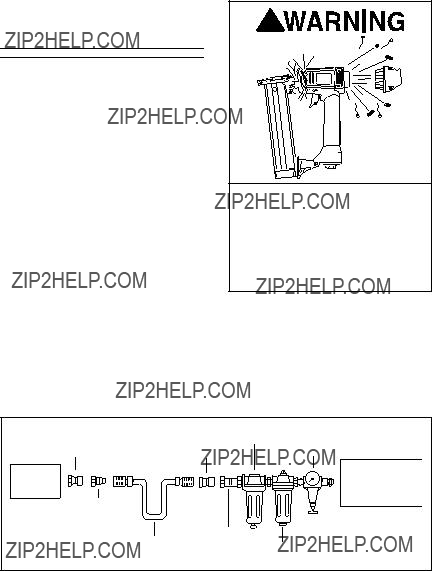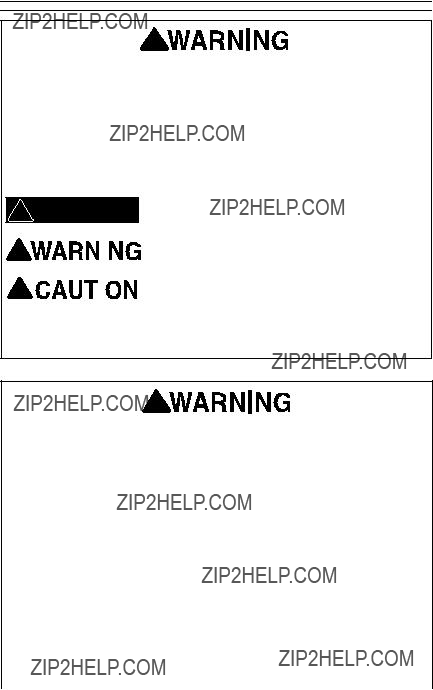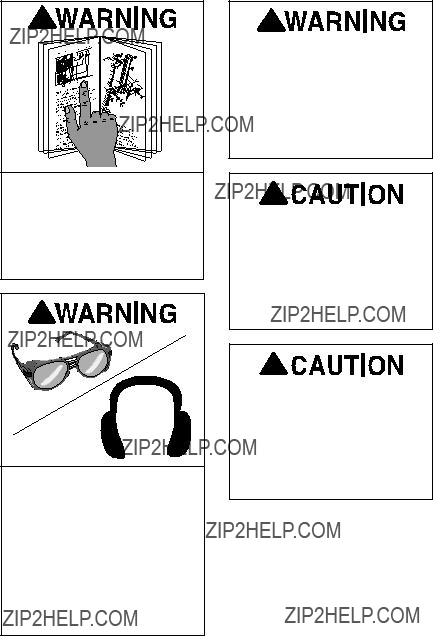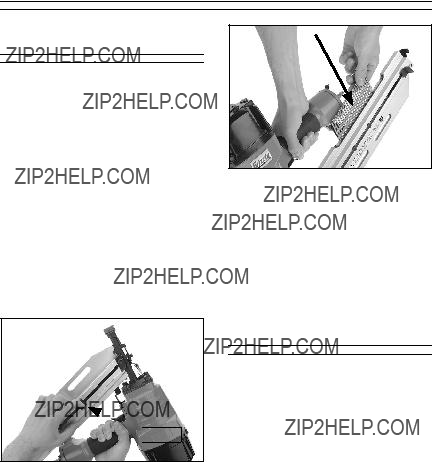MODEL H8234 28?? framing nailer
OWNER'S MANUAL
COPYRIGHT ?? AUGUST, 2007 BY GRIZZLY INDUSTRIAL, INC.
Warning: No portion of this manual may be reproduced in any shape or form without the written approval of Grizzly Industrial, inc.
#TS9831 printed in CHINA REVISED JULY, 2008 (TR)
4HIS MANUALMPROVIDES CRITICALOSAFETY INSTRUCTIONSTON THE PROPER SETUP�T
OPERATION� MAINTENANCE AND SERVICE OFATHIS MACHINE�EQUIPMENT�V
&AILURELTO READ� UNDERSTANDAAND�FOLLOW THE INSTRUCTIONS GIVENDINNTHIS
MANUAL MAY RESULTAIN SERIOUS PERSONALIINJURY�EINCLUDINGSAMPUTATION�
ELECTROCUTIONOOR DEATH�O
4HEHOWNEROOF THISRMACHINE�EQUIPMENT IS SOLELYIRESPONSIBLEUFORPITS
SAFE USE� 4HIS RESPONSIBILITY INCLUDES BUT ISINOTILIMITEDYTO PROPER
INSTALLATION INAATSAFE ENVIRONMENT� PERSONNEL TRAINING AND USAGEE
AUTHORIZATION� PROPERIINSPECTION AND MAINTENANCE�SMANUAL AVAILABILITY
ANDNCOMPREHENSION� APPLICATION OFNSAFETY DEVICES�CBLADE�CUTTER INTEG
RITY�TAND�THEAUSAGE OF PERSONALSPROTECTIVE EQUIPMENT�
4HEHMANUFACTURER WILLCNOTUBE HELD LIABLE FOR INJURY OR PROPERTY DAMAGEM
FROM NEGLIGENCE� IMPROPERNTRAINING�IMACHINEOMODIFICATIONSAOR MISUSE�
3OME DUST CREATEDTBY POWER SANDING� SAWING�PGRINDING� DRILLING� AND
OTHERHCONSTRUCTION ACTIVITIESTCONTAINS CHEMICALS KNOWN TOSTHEC3TATEA
OF #ALIFORNIAITO CAUSE CANCER� BIRTH DEFECTS ORCOTHERCREPRODUCTIVEV
HARM�R3OME EXAMPLESEOF THESE CHEMICALS ARE�
ss ,EAD FROM LEAD
BASED PAINTS�
ss #RYSTALLINEASILICA FROM BRICKS�ICEMENT AND OTHER MASONRY PRODUCTS� ss !RSENICEANDICHROMIUM FROMCCHEMICALLY
TREATED LUMBER�
9OUR RISK FROM THESE EXPOSURES VARIES� DEPENDING ONSHOWROFTEN YOU
DO THISTTYPE OF WORK�P4O REDUCE YOUR EXPOSURE4TO THESE CHEMICALS�
7ORK INKA WELL VENTILATEDLAREA�VANDNWORK WITHTAPPROVED SAFETY�EQUIP
MENT�NSUCH ASSTHOSEHDUST MASKS THATSARE SPECIALLY DESIGNED TO FILTERT
OUTUMICROSCOPICRPARTICLES�
SAFETY
For Your Own Safety Read Instruction Manual
Before Operating This Equipment
The purpose of safety symbols is to attract your attention to possible hazardous conditions. This manual uses a series of symbols and signal words which are intended to convey the level of importance of the safety messages. The progression of symbols is described below. Remember that safety messages by themselves do not eliminate danger and are not a substitute for proper accident prevention measures.
Indicates an imminently hazardous situation which, if not avoided, WILL result in death or serious injury.
Safety Instructions For Pneumatic Tools
1.KEEP ALL SAFETY DEVICES IN PLACE and in working order.
2.REMOVE ADJUSTING KEYS AND WRENCHES. Form habit of check- ing to see that keys and adjusting wrenches are removed from tool before operation.
5.KEEP CHILDREN AND VISITORS AWAY. All children and visitors should be kept at a safe distance from work area.
6.MAKE WORKSHOP CHILD PROOF by locking your shop and shutting off air valves.
3.KEEP WORK AREA CLEAN. 7. DO NOT FORCE TOOL. It will do
Safety Instructions For Pneumatic Tools
10.USE PROPER AIR HOSE for the tool. Make sure your air hose is in good condition and is long enough to reach your work without stretch- ing.
11.WEAR PROPER APPAREL. Do not wear loose clothing, gloves, neckties, rings, bracelets, or other jewelry which may get caught in moving parts. Non-slip footwear is recommended. Wear a protective hair covering to contain long hair.
12.ALWAYSUSESAFETYGLASSES.
Also use a face or dust mask if cut- ting operation is dusty. Everyday eyeglasses only have impact resis- tant lenses, they are NOT safety glasses.
13.WEAR APPROVED HEARING PROTECTION. Air escaping from pneumatic tools can exceed safe exposure limits and may cause hearing damage with prolonged exposure.
14.SECURE WORK. Use clamps or a vise to hold work when practical. It is safer than using your hand and frees both hands to operate tool.
15.MAINTAIN TOOLS WITH CARE.
Keep tools lubricated and clean for best and safest performance. Follow instructions for lubricating and changing accessories.
16.REDUCE THE RISK OF UNINTENTIONAL FIRING. Do not carry tool with hand on trigger and always disconnect from air when not in use.
17.DISCONNECT TOOLS before ser- vicing, changing accessories, or moving to another location.
18.DO NOT OVERREACH. Keep proper footing/balance at all times.
19.USE THE RECOMMENDED ACCESSORIES. Consult owner???s manual for recommended acces- sories. The use of improper acces- sories may cause risk of injury.
20.CHECK FOR DAMAGED PARTS BEFORE USING. Check for bind- ing and alignment of parts, broken parts, part mounting, loose bolts, and any other conditions that may affect machine operation. Repair or replace damaged parts.
21.NEVER LEAVE UNATTENDED
TOOL CONNECTED TO AIR.
Disconnect the air hose and do not leave tool until it is relieved of any built up pressure.
22.NEVER ALLOW UNTRAINED
USERS TO USE THIS TOOL
WHILE UNSUPERVISED.
23.IF YOU ARE UNSURE OF THE
INTENDED OPERATION, STOP USING TOOL. Seek formal training or research books or magazines that specialize in pneumatic tools.
24.BE AWARE OF HOSE LOCATION
WHEN USING PNEUMATIC TOOLS. Hoses can easily become a tripping hazard when laid across the floor or spread out in a disorga- nized fashion.
Additional Safety Instructions for Nailers
1.Hand injuries: Do not place your hands near the nail point of entry. A nail can deflect and tear through the surface of the workpiece, puncturing your hand or fingers.
2.combustible gases: Never con- nect the nailer to pressurized oxy- gen or other combustible gases as a power source. Only use filtered, lubri- cated, and regulated compressed air.
3.safe handling: Never point the nailer at others! Do not keep the trig- ger pulled when loading fasteners, carrying, or holding tool. Carry the nailer only by the handle, never by any other part. Do not carry the nailer by the air hose. Disconnect the nailer from the air hose when going up and down ladders.
4.MODIFICATIONS: DO NOT modify this tool or bypass the safety nose mechanism.
5.check valve: Do not use a check valve or any other fitting that allows air to remain in the tool.
6.HOSE USAGE: Make sure your air hose is designed for the tool in use, is in good condition, and is long enough to reach your work without stretching. However, an overly long air hose in the work area may be a tripping haz- ard.
7.OPERATING QUESTIONS: If you are not sure about the intended oper- ation, stop using the nailer. Seek formal training.
8.cleaning: Never use gasoline or other flammable liquids to clean the nailer; vapors in the nailer will ignite by a spark and cause it to explode.
9.Maintenance: Always disconnect air from the nailer when servicing or installing nails. During maintenance, a nailer connected to air may fire acci- dentally, causing serious personal injury.
10.compressed air rating: Do not connect the nailer to compressed air that exceeds 120 PSI.
Your new nailer was carefully packaged for safe shipping. If you discover any damage after you have signed for delivery, immedi- ately call Customer Service at (570) 546- 9663 for advice.
Save the containers and all packing mate- rials for possible inspection by the car- rier or its agent. Otherwise, filing a freight claim can be difficult.
When you are completely satisfied with the condition of the shipment, you should inventory the contents.
After you open the nailer box, you should find the following.
Figure 1. Model H8234 inventory.

Compressed Air
System
The Model H8234 is designed to be oper- ated at 80-110 PSI using clean, dry, regu- lated, compressed air. Do not exceed the 120 PSI maximum operating pres- sure for your model.
Before using your new nailer, regulate the air pressure to find the optimum setting within the specified operating range. Start by testing the nailer at a low setting, then increase the air pressure as needed for satisfactory results.
An in-line filter/lubricator/regulator unit can be installed, as depicted in Figure 2.
This filter/lubricator/regulator unit will protect your tool from damaging water build-up, allow you to adjust and maintain constant air pressure to your tool, and save you the inconvenience of having to manually lubricate your tool every time you use it.
Exceeding the maximum permissible operating pressure may damage the nailer and cause it to malfunction. To protect yourself from personal injury, DO NOT allow the air pressure to exceed the recommended pressure for this nailer!
Check the current Grizzly catalog for avail- ability of this unit. If you plan on install- ing a filter/lubricator/regulator unit in your compressed air system, always follow the connection instructions that come with the unit.
Figure 2. Typical filter/lubricator/regulator installation order.
WARRANTY AND RETURNS
Grizzly Industrial, Inc. warrants every product it sells for a period of 1 year to the original purchaser from the date of purchase. This warranty does not apply to defects due directly or indirectly to misuse, abuse, negligence, accidents, repairs or alterations or lack of mainte- nance. This is Grizzly???s sole written warranty and any and all warranties that may be implied by law, including any merchantability or fitness, for any particular purpose, are hereby limited to the duration of this written warranty. We do not warrant or represent that the merchandise complies with the provisions of any law or acts unless the manufacturer so warrants. In no event shall Grizzly???s liability under this warranty exceed the purchase price paid for the prod- uct and any legal actions brought against Grizzly shall be tried in the State of Washington, County of Whatcom.
We shall in no event be liable for death, injuries to persons or property or for incidental, contingent, special, or consequential damages arising from the use of our products.
To take advantage of this warranty, contact us by mail or phone and give us all the details. We will then issue you a ???Return Authorization Number,??? which must be clearly posted on the outside as well as the inside of the carton. We will not accept any item back without this number. Proof of purchase must accompany the merchandise.
The manufacturers reserve the right to change specifications at any time because they constantly strive to achieve better quality equipment. We make every effort to ensure that our products meet high quality and durability standards and we hope you never need to use this warranty.
Please feel free to write or call us if you have any questions about the machine or the manual.
Grizzly Industrial, Inc.
1203 Lycoming Mall Circle
Muncy, PA 17756
Phone: (570) 546-9663
Fax: (800) 438-5901
E-Mail: techsupport@grizzly.com
Web Site: http://www.grizzly.com
Thank you again for your business and continued support. We hope to serve you again soon!











 Pusher
Pusher
 Cap Screw
Cap Screw





 )*
)*
 *%
*% *(
*( *,
*,

